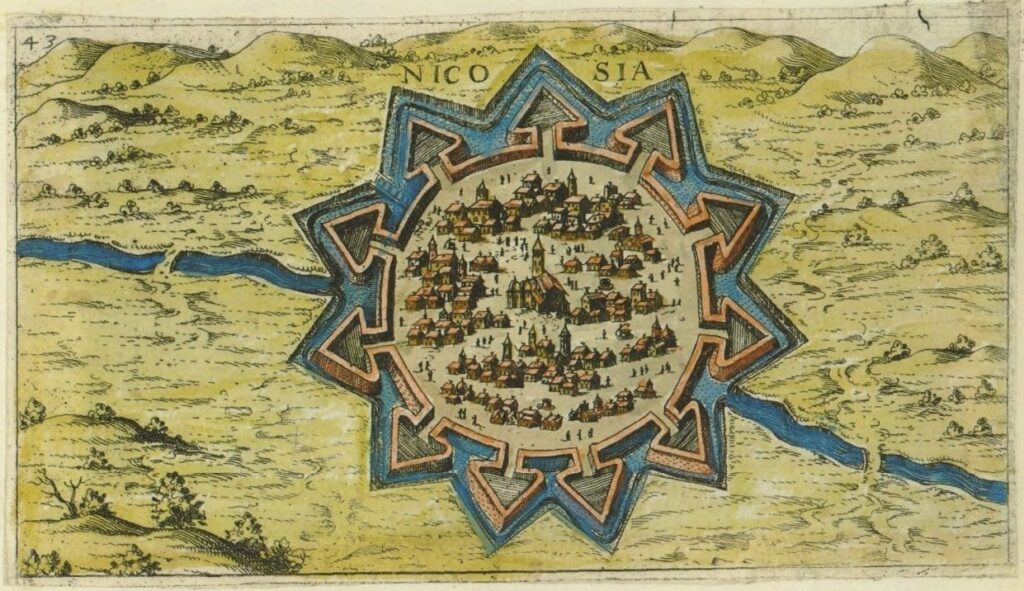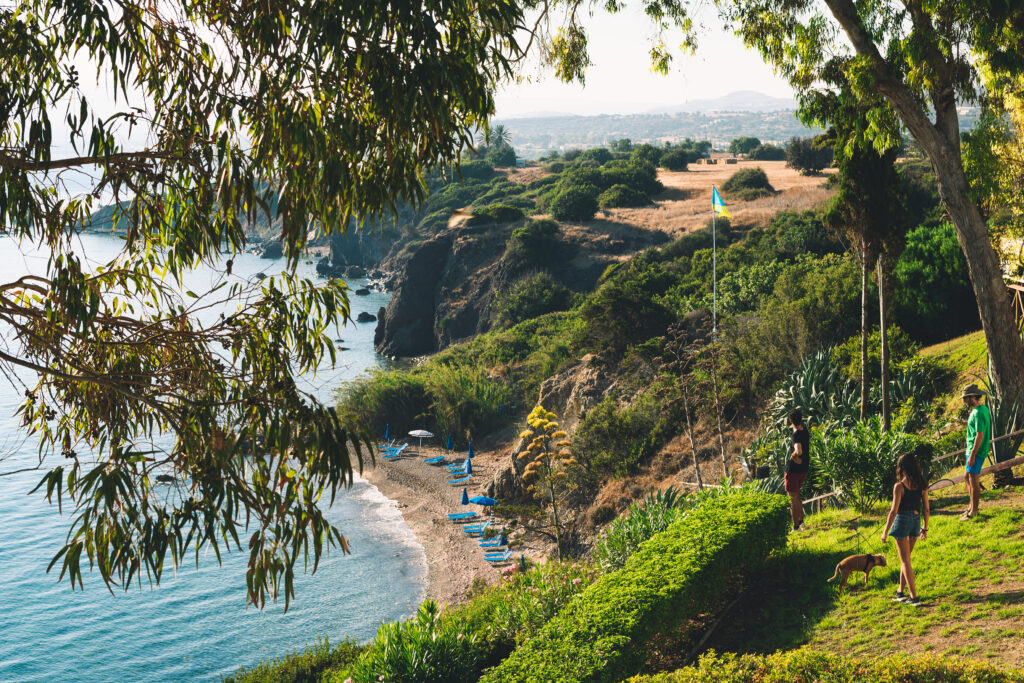Enjoying Cyprus
Give yourself some time to enjoy Cyprus sunshine, beaches and cultural heritage. We promise excellent Cypriot hospitality and traditional Mediterranean cuisine!
You can find more information on the Cyprus Tourism Portal, but here are also some tips of what not to miss!
Welcome to Nicosia


Nicosia, the vibrant capital of Cyprus, seamlessly blends ancient history with modern culture. As the last divided capital in Europe, it offers a unique and enriching experience for travelers. Before you embark on your journey, here is some essential information to make your trip as smooth and enjoyable as possible. You can also check the website of the Nicosia Tourism Board, and specifically the Visit Nicosia website, where you can find information about the city, things to do, guided tours, events, transportation and tips on accessibility.
A Glimpse into Nicosia’s History

Nicosia’s history dates back over 4,500 years, making it one of the oldest cities in the world. It has been the capital of Cyprus since the 10th century and has witnessed various rulers, including the Byzantines, Lusignans, Venetians, Ottomans, and British. This rich tapestry of influences is evident in its architecture, culture, and traditions.
Greater Nicosia is probably the only area in Cyprus that can boast continuous habitation since the beginning of the Bronze Age, 2500 BC, when the first inhabitants settled in the fertile plain of Mesaoria. During the first millennium BC, when Cyprus was divided into City-Kingdoms, Nicosia enjoyed neither the power nor the prosperity of other kingdoms, most of which lay on the coastline. It became obvious that the Kingdom of Ledra was firmly under the political will of its neighbours until the Roman times, when Nicosia was nothing more than a small town. It was not until the dissolution of the City-Kingdoms at the end of the 4th century AD that Nicosia managed to exploit its natural resources and geographical location at the centre of the island. From antiquity to the present Nicosia passed through several names: Ledra – Kallinikisi – Lefkothea – Lefkousia – Lefkosia. Nicosia had probably become the centre of administration and the island’s capital in either the 9th or 10th century. It had acquired a castle and was the seat of the Byzantine governor of Cyprus.
Visiting the city one can recognize the reflection of the vicissitudes of Cypriot history and both Eastern and Western influences, as Nicosia came successively under the control of the Byzantines (330–1191), the Lusignan kings (1192–1489), the Venetians (1489–1571), the Turks (1571–1878), and the British (1878–1960).
As a result of the Turkish invasion in 1974, part of the northern section of Nicosia, including the former international airport, has remained within the United Nations Forces in Cyprus operational boundary separating the Republic of Cyprus (south) from the Turkish Cypriot occupied areas (north). The city experienced an influx of an estimated 35,000 Greek Cypriot refugees from the north in the mid-1970s and it is today considered the only divided capital in the world. The country’s buffer zone also known as Nicosia’s Green Line extends through various checkpoints along with the capital. More history and details on the Nicosia Municipality website
Cultural Sites and Heritage
Nicosia is known for its fascinating history. Some of the top attractions of the city, in addition to the Venetian walls themselves, are located within the Walls and include: the Famagusta Gate and Aqueduct, the Paphos Gate, The Palace of Archbishop Makarios III, Ledra Pedestrian Street with several of observation view points, Laiki Geitonia, the renovated city centre as a new cultural center with museums and exhibitions.
You can check out:
- Venetian Walls: Encircling the old city, half being under the occupied area of the city, these impressive 16th-century fortifications offer a glimpse into Nicosia’s past.
- Ledra Street: A bustling pedestrian street that runs through the heart of Nicosia, offering shopping, dining, and access to the Green Line crossing.
- Cyprus Museum: The oldest and largest archaeological museum in Cyprus, showcasing artifacts from the Neolithic to the Byzantine periods.
- Leventis Municipal Museum: A treasure trove of Nicosia’s history, culture, and heritage, located in a restored mansion.
- A. G. Leventis Gallery: Built a few steps from Nicosia’s historic centre, it presents an extensive collection of important works of European art, as well as a collection of Greek artists and a collection of Cypriot art.
Nicosia also holds several museums and galleries with ancient and archeological exhibitions as well as contemporary and classical artwork. Churches and mosques with interesting architecture and history are also a big part of a city walk, together with the Hot Baths which operate today and are worth visiting!
The NiMAC is a suggested collaborating organization for the conference and will probably be able to host/organize a tour in its space and around the city.
Free wifi is available in the city centre to help visitors more around using online applications and maps.
Around the city of Nicosia


Nicosia extends to the mountain of Troodos covering areas with forest landscape and parks, as well as nice traditional villages (e.g. Fikardou, Kykkos, Palaichori).
The city is also 30 to 90 minutes drive from cities by the coast such as Larnaca (30 minutes drive), Protaras and Agia Napa (60 minutes drive), Limassol (45 minutes drive) and Paphos (90 minutes drive).
Highlights of Other Cypriot Cities
- Limassol: Known for its vibrant nightlife, beautiful beaches, and historical sites like the Limassol Castle.
- Paphos: A UNESCO World Heritage site, famous for its archaeological parks, ancient mosaics, and the legendary birthplace of Aphrodite.
- Larnaca: Home to the stunning Church of Saint Lazarus, beautiful Finikoudes Beach, and the Larnaca Salt Lake, a haven for flamingos.
- Ayia Napa: Renowned for its pristine beaches, crystal-clear waters, and lively entertainment scene.
Whether you’re exploring historical sites, enjoying local cuisine, or experiencing the vibrant culture, Nicosia and Cyprus offer an unforgettable journey. We look forward to welcoming you to our seminar and hope you enjoy your stay in this fascinating city.